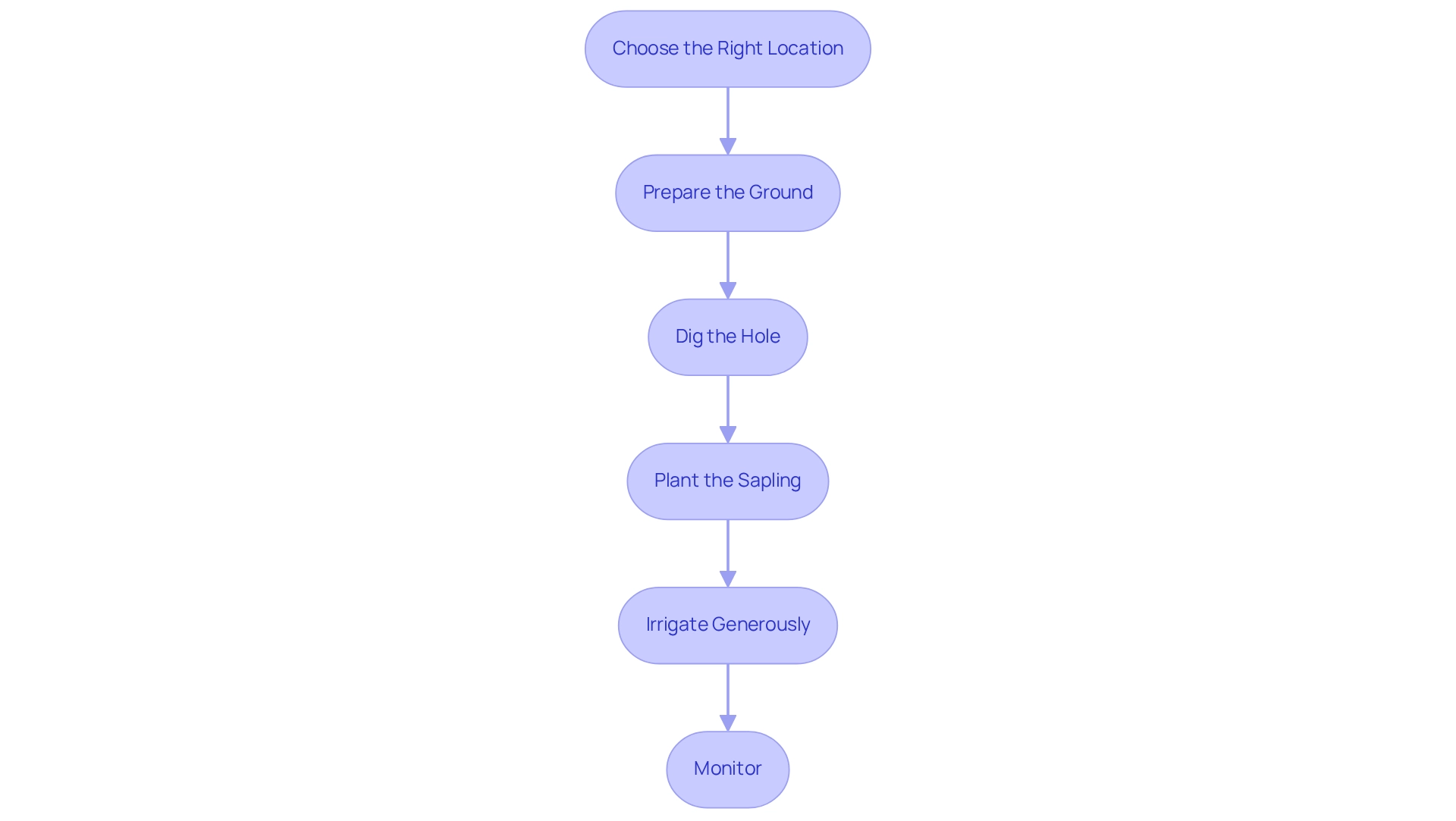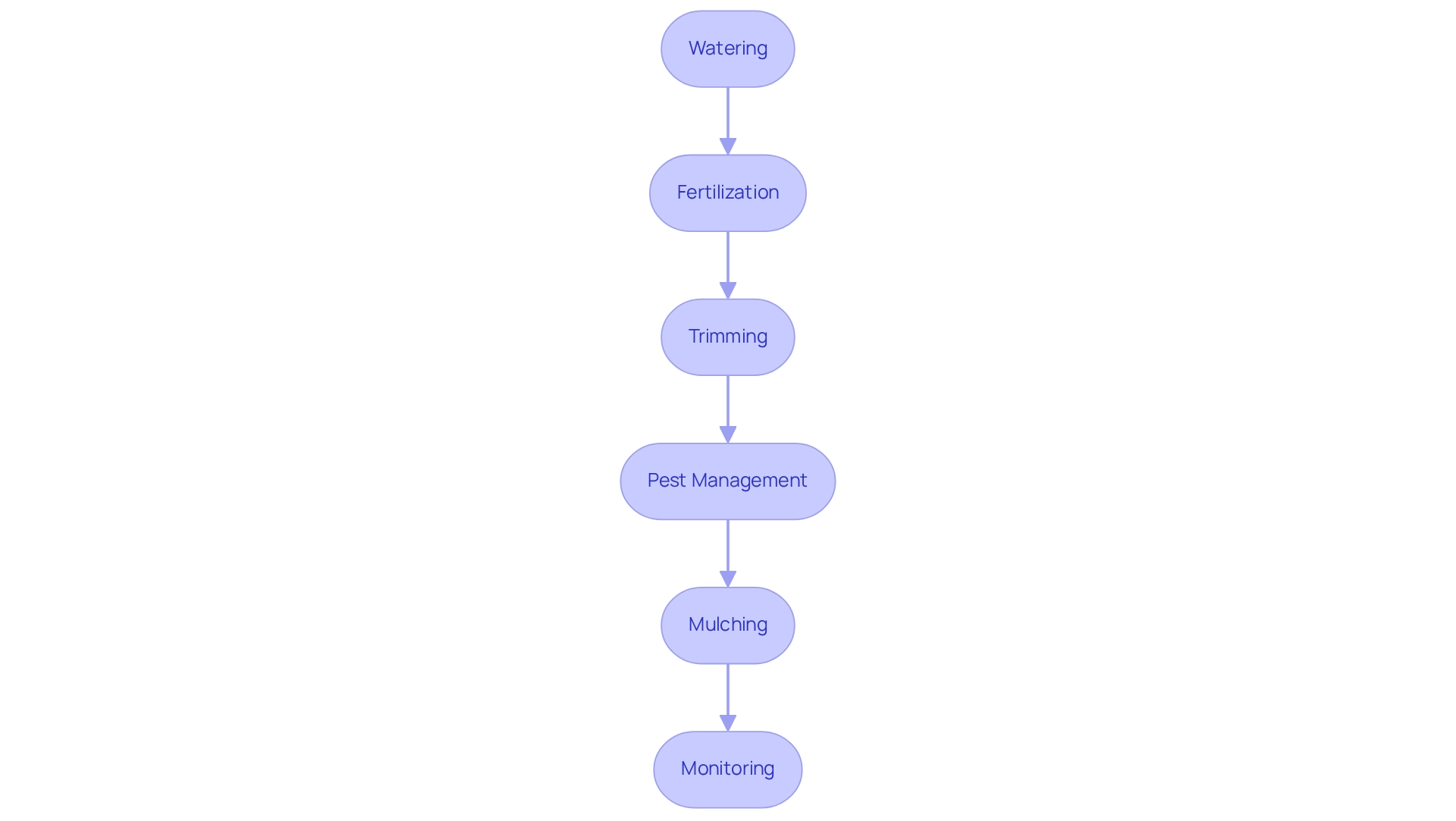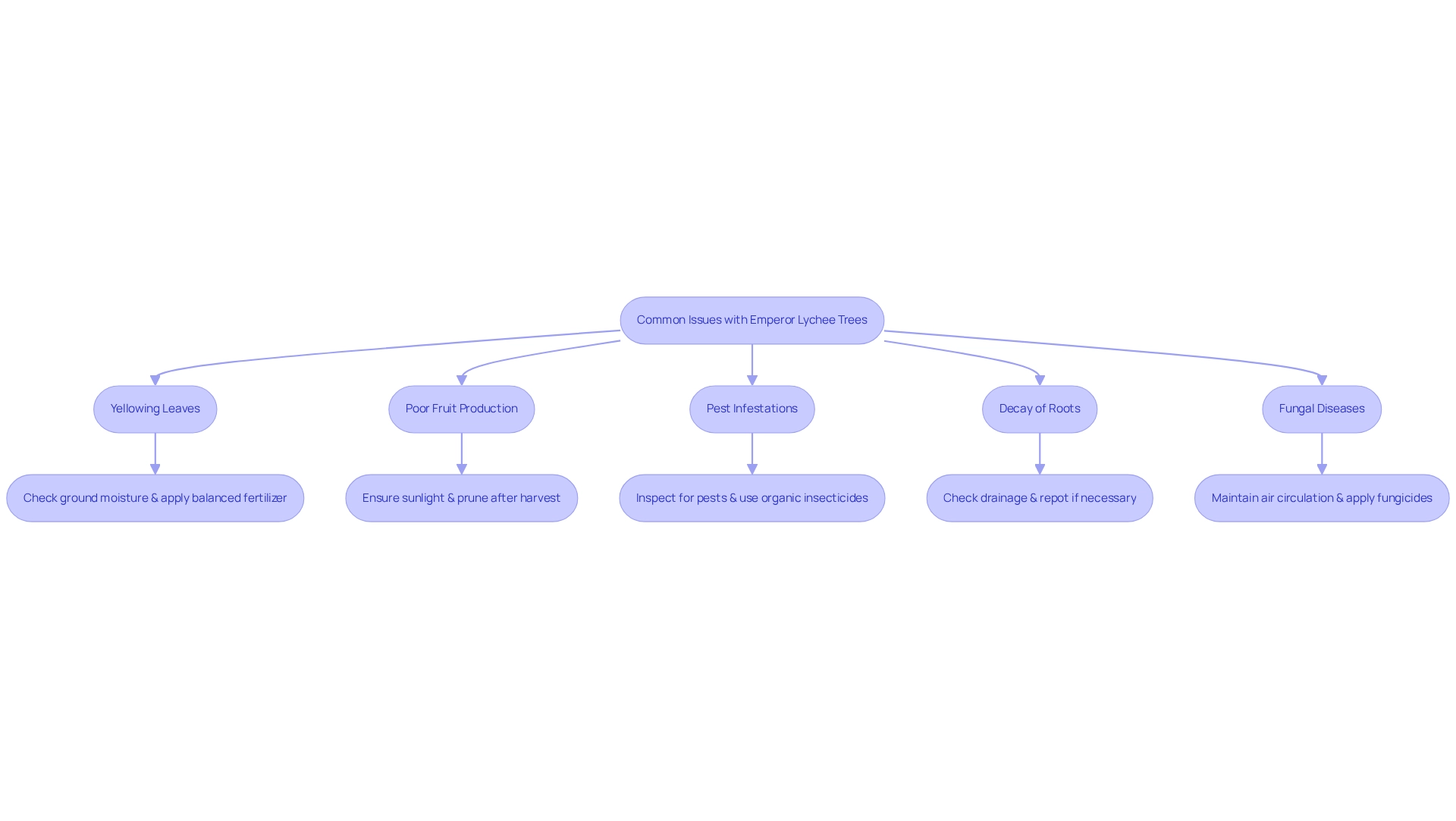Ever dreamed of harvesting tropical lychees in your own backyard?
The Emperor Lychee Tree is your perfect start—compact, productive, and beautiful. With glossy foliage, fragrant blossoms, and sweet fruit, it brings the tropics right to your patio or garden.
👉 Get your Emperor Lychee Tree (Dwarf, Air-Layered) from Everglades Farm
Everglades Farm ships expert-grown trees directly to your door—healthy, established, and ready to thrive. Plus, their About Page tells you everything about their quality promise.
Explore more Fruit Trees and Fast Growing Trees to round out your tropical orchard.
Introduction
What is the Emperor Lychee Tree: Characteristics and Requirements
Plant the Emperor Lychee Tree: Step-by-Step Instructions
-
Choose the Right Location: It’s essential to select a site that receives full sun for at least 6-8 hours daily. Ideally, this location should be sheltered from strong winds to protect the delicate branches of the emperor lychee tree. As you consider your garden space, think about how these factors can create a nurturing environment for your new tree.
-
Prepare the Ground: Start by conducting a pH test of the soil, aiming for a slightly acidic range of 5.0-5.5. Enriching the soil with organic matter, like compost, will enhance drainage and nutrient availability—both crucial for healthy growth. Remember, a well-prepared ground is the foundation for your tree's success.
-
Dig the Hole: Create a hole that is twice as wide and the same depth as the plant's root ball. This provides ample space for the roots to expand and establish themselves.
-
Plant the Sapling: Position the sapling in the hole, ensuring that the top of the root mass is level with the surrounding ground surface. Backfill with soil, gently compacting it around the plant to remove air pockets, which can hinder growth.
-
Irrigate Generously: After planting, water the tree deeply to help settle the soil around the roots. This encourages good contact and minimizes transplant shock. Covering the base of the plant with a layer of mulch will help retain moisture, regulate ground temperature, and suppress weed growth that competes for nutrients.
- Monitor: For the first few weeks, keep a close eye on your tree. Ensure it receives adequate water as it establishes itself. Regular monitoring will help you identify any issues early, allowing for timely intervention. Remember, nurturing your tree is a rewarding journey that requires patience and care.

Maintain Your Emperor Lychee Tree: Care and Maintenance Tips
-
Watering: It's important to keep the soil consistently moist, but avoid waterlogging. During dry spells, especially in the first two years after planting, deep watering encourages strong root development. Lychee plants thrive on a careful balance of moisture, needing a dry, cold winter lasting up to five months for optimal growth. As Kiersten Rankel humorously remarks, "Crispy leaves? Your lychee is thirstier than a tourist in the Sahara." Remember, nurturing your plant's hydration is key to its health.
-
Fertilization: To foster healthy growth and enhance fruit quality, apply a balanced fertilizer every 4-6 weeks throughout the growing season, which spans spring and summer. Organic fertilizers are particularly beneficial, and having a well-organized fertilization timetable is essential for the health of your tropical fruit plants. This regular care will help your lychee flourish.
-
Trimming: Yearly trimming is vital to maintain the plant's form and remove any dead or unhealthy branches. This practice not only improves air circulation and sunlight penetration but also supports the overall well-being of your plant, ensuring it can thrive for many years. Embrace this opportunity to connect with your plant as you help it grow.
-
Pest management: Regularly inspect your emperor lychee tree for pests such as aphids and scales. If you spot any, act quickly with organic insecticidal soap or neem oil to protect your plant's health and fruit yield. Additionally, be vigilant for signs of animal presence, such as tracks and droppings, to prevent potential harm. Your attentiveness can make a big difference.
-
Mulching: Replenishing mulch annually helps retain soil moisture and suppress weed growth. A good layer of mulch significantly enhances the growing conditions for your plant, creating a nurturing environment. Think of it as a cozy blanket for your garden.
- Monitoring: Keep a watchful eye on your plant's overall health, looking for signs of stress or disease. Early detection and swift action are crucial to preserving the vitality of your lychee plant, ensuring it continues to provide beauty and fruit for years to come. Remember, you are not just growing a plant; you are cultivating a relationship with nature.

Troubleshoot Common Issues: Solutions for Growing Emperor Lychee Trees
- If you're noticing yellowing leaves on your emperor lychee tree, it may indicate overwatering or a nutrient deficiency. To help your tree thrive, check the ground moisture levels and consider applying a balanced fertilizer to replenish essential nutrients. Additionally, planting your fruit plants on a mound of native soil, roughly 2 to 3 ft high and 4 to 10 ft in diameter, can significantly enhance their survival.
-
Poor fruit production can be mitigated by ensuring that your emperor lychee tree receives ample sunlight and nutrients. Pruning is an essential practice; it improves air circulation and removes competing branches that could hinder fruit development. According to Carlos F. Balerdi, it's best to prune immediately after harvest, allowing new shoots and leaves to regrow and mature before the cooler winter temperatures arrive.
-
Pest Infestations: Regularly inspecting your tree for pests is vital. If you find any, treat the affected areas with organic insecticides and ensure there is good airflow around the plant to prevent future infestations.
-
Decay of Roots: If your tree appears droopy despite adequate watering, it may be a sign of root decay. Check for drainage issues, and if your tree is in a container, consider repotting it to encourage healthier root growth.
- Fungal Diseases: To reduce the risk of fungal infections, maintain good air circulation and avoid overhead watering. If you notice any signs of disease, applying fungicides can help manage outbreaks effectively. Be particularly vigilant during warm, humid, and wet conditions, as these can prompt a thorough examination for disease symptoms. By addressing these common challenges with proactive solutions, we can nurture the health and productivity of our emperor lychee tree, ensuring a bountiful harvest. Understanding how weather impacts Lychee Tree health can also help us distinguish between environmental stress and actual disease, allowing for more effective management.
Remember, gardening is a journey we share, and with care and attention, we can cultivate our gardens together.

Conclusion
🌱 Ready to Grow Your Own?
The Emperor Lychee Tree brings beauty, flavor, and a sense of accomplishment to your home garden. Whether you’re in a warm climate or growing in a container, it’s a compact powerhouse.
👉 Shop Emperor Lychee Tree (Dwarf, Air-Layered) now
🔗 Explore More:
Read: 5 Effective Lychee Erinose Mite Treatment Strategies for Gardeners




0 comments